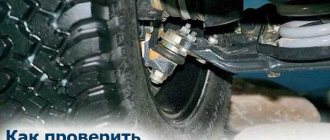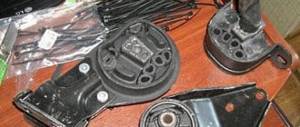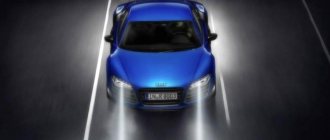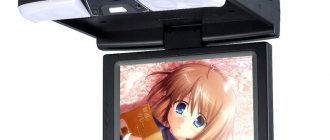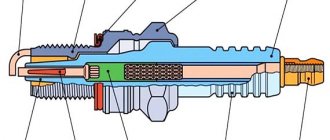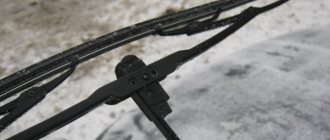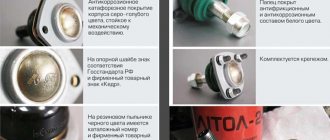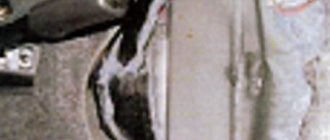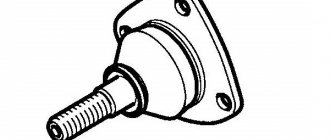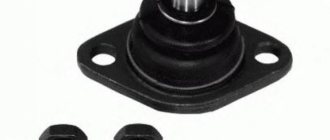Cars admin26.02.2020
In this article you will find a large database of spare parts manufacturers and find out which spare parts are worth buying and which are not.
PS This article does not reflect the opinion of the editorial staff of Orel Automobile, but is only an excerpt of notes from the Internet.
There are companies whose spare parts can be said with a fairly high degree of probability that they are of good quality. These are Lmi, Boge, Behr, Ate, Lucas, Remsa, Jur > (with reservations), K+F, Kilen, TRW, Pag > (VDO Siemens), Pierburg, Kolbenschmidt, SM, SWF ZF, Valeo, LUK, Votex, LESJOFORS, Dayco, Beru, Eyquem.
Liquids - Phoebe, Pentosin. hepu
There are companies whose spare parts can be said with a fairly high degree of probability that they are of poor or disgusting quality. These are Febi, Meyle, HP (partly), Gabriel, Alko, Optimal, Bosal, Ruville, Filtron, ATS SFEC. As far as I know, FEBI and RUVILLE are packers whose boxes can contain anything.
So let's look at the companies:
TRW, also known as LUCAS , is a worthy manufacturer (brake systems, suspension parts), but they don’t make shock absorbers themselves, even though they can be found on the market.
TEXTAR - as a rule, the quality is good, but not everyone likes “hard” pads.
ATE - Some of the best on the market, work especially well if both discs and pads are ATE. (Wear out quickly).
FERODO - Often found in original European cars, everything except the FSL series of pads is of good quality.
BOSCH - Braking systems of good to average quality, Electronics of excellent quality (except for universal oxygen sensors). The wipers are of excellent quality, but they don't last long.
MINTEX - brake systems, economy version from TEXTAR, but they work well, you can take them.
REMSA - average indicators without failures.
JP GROUP - officially Denmark, really China, you can only take it if there are no other options. They often make something that no one else produces.
OPTIMAL - It’s not worth taking anything, there is no quality.
LPR - Italy, really China, the quality is below average.
ABS - the quality is below average, but the price is good.
NK - Good discs and pads, balls, ends, rods, bad parts where there are rubber bands, levers, silent blocks
Kayaba ( KYB ) - shock absorbers of excellent quality (regardless of the manufacturer), springs of average quality.
BOGE aka SACHS - shock absorbers, supports, decent quality.
BILSTEIN - good quality (especially the B6 and B8 series)
DELPHI — Brakes, suspension and steering parts, average quality, the pads are hard and kill the discs.
MEYLE - average quality of all products. Rubber elements are short-lived.
MANN - filters of excellent quality, often in original.
FILTRON - good quality filters, often original (VAG)
HENGST - good quality filters, often original
KNECHT aka MAHLE filter of excellent quality,
MAHLE piston rings, pistons, excellent quality.
NIPPARTS aka JAKOPARTS are not manufacturers, packers, overall average and low quality.
MAPCO - below average, I don't recommend it.
SIDEM - average and above average quality
LEMFORDER - good quality, often original; there are many fakes on the market.
MOOG - good quality, at the level of LEMFORDER and TRW
OCAP - below average.
CTR is a good option for Koreans and Japanese, not to be confused with GTR - this is China.
RUVILLE - packer, quality is average and below average
FEBI aka SWAG - average and below average quality, good quality of liquids.
CONTITECH - original quality, (often found in original kits)
GATES - original quality (often found in original kits)
DAYCO - original quality (often found in original kits)
AE - average quality.
SKF - good quality (SKF, SNR, FAG, INA often reforge each other)
SNR - good quality
FAG - good quality
INA - good quality
SASIC - good quality (original for the French).
LOBRO aka GKN aka SPIDAN CV joints, drive shafts, original quality.
METELLI quality is good (it’s better to replace the plastic boots), you can take it if you don’t have it LOBRO aka GKN aka SPIDAN
GLO - average quality
GSP - average quality
GENERAL RICAMBI - average quality (steering racks are not new, but refurbished)
ELRING - gasket seals, excellent quality
VICTOR REINZ - good quality
PAYEN - good quality
AJUSA - average quality
HEPU - pumps, original quality
DOLZ - average quality
NISSENS – Radiators, good/excellent quality
HELLA - excellent quality
DENSO - excellent quality, but many fakes
AVA - below average quality.
SAKURA - below average quality.
NGK - spark plugs, coils, sensors, excellent quality
BERU - excellent quality.
LUK - excellent quality clutches
VALEO - clutches, electrics, original quality.
BOSAL - exhaust system, towbars are of average to good quality.
RBI - the cheapest Taiwanese spare parts.
555 — if it’s not a fake, it’s real Japan, draw your own conclusions. Japanese company - Indonesia plant. Moreover, you can’t get to the plant from the street. 100% of products go to Japan. But the quality must be said to be not high compared to Qsten, although 555 is positioned as inexpensive spare parts.
GMB - Japan, high-quality parts, but not the same as the original. I tried it personally, everything is fine.
Autowelt are duplicates of spare parts for the engine, in principle the quality is good, but not original.
NTN , NSK , Koyo - Japan, in principle, the same thing that comes in the original packaging of many Japanese cars, only in the packaging of their direct manufacturer.
RBH - Taiwan is kind of cheap.
Febi , SWAG - Europeans, but not the same as the original.
Quinton Hazell is a packer, anything can be in the box.
Ina is a manufacturer of rollers and bearings, and is a supplier to the assembly lines of Ford, Mazda, Peugeot and many others. He is a co-owner of NTN. NTN is a good company, but I have no idea about Ina.
SRN - Europe, it may have Ina in its box, for example.
Lemforder is a very well-known manufacturer, supplier of many conveyors in Europe, very high quality suspension parts and belts. Attention! Only spare parts with 5 digits in the article number are high quality! This only means that they were produced at the Lemforder factory. If there are 7 digits, then the last two digits indicate the code of a third-party manufacturer, and as you know, it could be anyone!
Ajusa , Elring - these manufacturers only in situations where the original is not available in nature.
Taiho is an OEM supplier for Japanese conveyors.
CTR - Korea, former GMB branch. Official supplier of suspension parts for Korean auto conveyors.
AVA Cooling Systems is represented by its production in many European countries. Haugg Kuhlerfabrik GmbH develops, produces, markets and services water-cooled radiators, oil coolers, charge air coolers, as well as condensers, evaporators, compressors and complete cooling modules. All products correspond to the original in both quality and characteristics. (I bought a radiator from this company. Everything is fine!)
Febest , Nipparts , Febi , ASVA , Hanse , japan parts , japan cars are not manufacturers, but packers. They don’t do anything themselves, they place orders at factories, usually in China.
Power supply and exhaust systems
Fuel filter
good: Knect mahle The original does not differ much in price. Not good: Filtron, Meyle, Fram, SCT
Transmission filter
Only original Not good: FEBI, HansPrice, Meyle
Muffler
good: Walker (Fonos), Ernst (most often in the original) Not good: Ferroz, Bosal, Arvintesh.
Muffler suspension cushion
Good: Walker Not good: JP Group, Hanse Prize
Fuel pump
good: VDO, Pierburg (in the original most often), Bosch (if not a fake), Not good: ATS, Hansprise, Jp Group
Chassis
CV boot
good: Lemforder so-so: GKN-Sp > (according to reviews from Forum members) Not good: Sfec febi
Clutch slave cylinder
good: Lucas TRW Not good: Febi, Fenox
Clutch
good: Luk (in the original most often), Sachs, Valeo Not good: Meyle and everything else
CV joint
good: GKN-Spidan, Loebro, Metelli Not good: Meyle, Patron, ASBA
Steering Rack
Good: Lucas/TRW, General ricambi, Quinton Hazell, ZF (original), GKN-Spidan Good: Lizarte, SIR, Flennor Bad: Optimal, Mapco, Jp Group, Sasic, Wat, Triscan REmy
Wheel bearings
good: SKF, FAG (Germany), INA, SNR (France) Not good: Optimal, Ruville, Febi, Meyle.
Suspension and steering
Shock absorbers
good: Boge, Sachs, Eibach, Koni, Bilstein (sometimes), KAYABA (if you're sure it's Japanese) Not good: Monroe, Magnetti Marelli, Mapco, Optimal.
Power steering fluid
good: Febi/Bilschtein 6161 (synthetics) 6162 (Mineral water), Original (G 004000M2, G 002000)
Tie rod end and the rods themselves
good ones: Lemforder, Moog, Lucas/TRW. Not good: Ruville, Febi, Meyle
Power steering pump
good: ZF, SIgnav (in original) GKN Spidan, Delko Remy, Kub Not good: KAYABA
Shock absorber bumper
good: Lemferder, Boge (in the original most often) Not good: Meyle, Febi, Ruville.
Springs
good ones: K&F, Lesjofors, Bilstein, Kayaba. Not good: Suplex, CS germany.
Shock absorber boot
good: Lemferder (most often in the original) Not good: Febi, meyle, Hans Prise.
Levers
good: Lucas TRW, MooG Not good: Febi/Bilschtein, Herzog
Front suspension arm
good: Lemforder, Lucas (TRW) Not good: Febi
Silent blocks
good: Boge, Lemforder Not good: Meyle, Febi, SWAG, Sfec (not rubber, but coal)
Other
Wind deflectors
Good: EGR (Australia), ClimAIr (Germany) Not bad: V-STAR (Taiwan), Matrix, Heco (Poland) Not good: VoRON GLASS
Brushes
good: Hella, SWF, Valeo, Champion (if not fake)
The movable connection of the wheel hub with the lever is ensured by a ball joint. This unit is a two-part structure. Inside the case there is a metal ball with a finger on which there is a thread. To eliminate backlash in the assembly, polymer inserts are used, and a special lubricant helps reduce friction during turns. The service life of the ball joint can reach 100-150 thousand kilometers; if play or knocking occurs, for safety reasons the responsible unit should be replaced immediately. Recommendations from our experts will help you choose a reliable spare part.
Which ball joints are more popular - TRACK or Belmag?
In November 2020, on PartReview, TRK ball joints were generally more popular than Belmag.
In terms of the ratio of votes, TREC ball joints surpassed Belmag:
- TRACK had a ratio of positive votes (174) to negative votes (71) of 103 votes.
- For Belmag, the ratio of positive votes (100) to negative (79) was 21 votes.
In terms of the number of reviews, TRACK ball joints surpassed Belmag:
- There are 79 reviews written on TRACK ball joints: 54 positive, 5 neutral, 20 negative.
- There are 56 reviews written on Belmag ball joints: 26 positive, 11 neutral, 19 negative.
How to choose a ball joint
Types of levers
. Automakers use several types of articulated joints.
- Collapsible control arms feature an inexpensive replacement ball joint. During repairs, the lever along with the support is removed from the car’s suspension, and then a new spare part is installed in place of the worn unit. The only drawback of this design is the need to adjust the wheel toe angle after repairs.
- Non-separable levers are supplied to the retail chain together with a pressed-in ball joint. On the one hand, no additional adjustments are required, and the process of replacing the lever assembly looks simpler. But the cost of the unit often exceeds all the costs of repair work.
Number of ball joints.
After diagnosing the suspension at a service station, a motorist may be unpleasantly surprised by the need to replace several ball joints.
- The simplest design is the MacPherson strut front suspension, which uses one ball joint on each side. Usually it has a lower location.
- If the suspension is multi-link, then there is a lower and upper ball joint on each side.
- There are special rear suspension designs that also use wishbones with ball joints. Most often they are installed on top.
Accessories
. Some additional components are supplied with the ball joint.
- Rubber corrugated boots are used to protect the hinge joint from moisture and dust. The durability of the ball joint often depends on the quality of these elements. If the motorist misses the moment when the rubber cracks, then the days of the hinge are numbered.
- The locking ring should securely fix the boot on the ball joint. Some manufacturers forget about this element, which leads to the boot jumping off the mounting socket.
- To install the ball joint on the lever, fasteners are also required. These are bolts with nuts, as well as a special pin nut with a polymer stopper.
Symptoms of wear.
The safety of the driver and passengers depends on timely detection of ball joint wear. Before the knot falls apart, the following warning points appear.
- Most often, a knock occurs in the suspension; it is especially clearly heard when turning, if there are irregularities on the road.
- In frosty weather, wear of the unit may be indicated by a strong creaking noise while driving.
We have selected 12 of the best manufacturers of ball joints for review. Their products are supplied to all regions of Russia. When allocating seats, the opinion of the expert community and reviews of domestic car owners were taken into account.
Which ball joints are better - Belmag or TRACK?
In November 2020, on PartReview, TRK ball joints were generally better than Belmag.
- TRACK received a PR score of 71 out of 100, and Belmag managed to score 55 points.
- TRACK took 1st place in the ranking of the best manufacturers, and Belmag took 9th place.
- TRACK's average review score (3.6) is higher than Belmag's (3.3).
- TRK ball joints have better property ratings than those of Belmag:
- Anther - the owners believe that TRACK has this property better than Belmag.
- Durability - car enthusiasts claim that this property of TRACK is superior to Belmag.
- Lubrication - according to reviews it is clear that this property is preferable for Belmag than for TRACK.
Rating of the best manufacturers of ball joints
| Nomination | place | manufacturer | rating |
| Rating of the best manufacturers of ball joints | 1 | Lemforder | 5.0 |
| 2 | CTR | 4.9 | |
| 3 | MASUMA | 4.8 | |
| 4 | Delphi | 4.7 | |
| 5 | 555 | 4.6 | |
| 6 | MOOG | 4.5 | |
| 7 | RUVILLE | 4.4 | |
| 8 | Nipparts | 4.3 | |
| 9 | Mapco | 4.2 | |
| 10 | TRW | 4.1 | |
| 11 | TRACK | 4.0 | |
| 12 | Cedar | 3.9 |
Lemforder
The famous German company Lemforder was founded in 1947 in northern Germany. A year later, suspension parts began to be supplied to the country's car factories. Today, products are supplied to the conveyors of such large concerns as GM, Ford, BMW, Fiat, Mitsubishi, Toyota, etc. The company produces a wide range of spare parts for heavy trucks MAN, Volvo, Iveco, DAF, Mercedes. The manufacturer's catalog presents a wide range of ball joints, steering ends, rods, silent blocks, stabilizers, and levers. Experts gave the brand first place in our ranking for creating the largest research center on the continent.
Many motorists consider Lemforder parts to be the best for chassis repairs. But when purchasing, it is important not to fall into counterfeit products.
Advantages
- rich assortment;
- research work;
- reliability and durability;
- high quality.
Flaws
- a lot of fakes.
In recent years, domestic motorists have begun to prefer ball joints from the South Korean manufacturer CTR. The company was founded in 1971, and 2 years later the production of chassis parts for the Hyundai automobile plant began. The brand boasts awards from the government of the Republic of Korea, a large research and development center, as well as partnerships with GM, Hyundai and Kia Motors. According to experts, the brand has found the optimal balance between affordable price and good quality. This allows the manufacturer to take second place in the ranking.
Russian car owners consider CTR ball joints a good alternative to original spare parts. They note the presence of the catalog on the official website. The disadvantages include weak threads and a limited range.
Advantages
- high quality;
- reasonable prices;
- research work;
- good equipment.
Flaws
- weak thread.
MASUMA
MASUMA is a major global manufacturer of auto parts. The brand has a 17-year history, during which time a small enterprise has turned into a large manufacturing company. The catalog contains more than 45 categories and 10 thousand items. A highly qualified engineering base helps the company master the production of new parts. In 2020, the head office was moved from Japan to China, which is explained by the growth in sales of spare parts in the Middle Kingdom. A large volume of supplies remains to the markets of Russia and Malaysia. Experts gave bronze in our rating to this brand due to its unstable durability.
Some users are satisfied with MASUMA ball joints, which last more than 30 thousand km. For some car owners, the components wear out after six months.
Advantages
- modern Japanese equipment;
- affordable prices;
- rich assortment;
- full production cycle.
Flaws
- unstable quality.
Delphi
The combination of modern equipment and strict quality control allows the American company Delphi to maintain a leading position in the global spare parts market. Ball joints of this brand are characterized by high strength and long service life. The manufacturer is confident in the quality of its products; it provides a guarantee for a year or 50 thousand km. Experts confirm the high service life of ball joints; some of them have a service life of up to 100 thousand km. Despite this, the brand is one step away from the top three ranking.
Ball joint design options
The quality of each support is determined, first of all, by its design. There are several design types on the automotive parts market that differ in price, practicality and durability.
Main types of ball joint designs:
- solid forged - have the greatest mechanical strength, withstand loads of over 5 tons, are extremely durable (up to 100 thousand kilometers);
- sunset ones - relatively inexpensive (due to low cost), but high-strength spare parts designed for high impact loads;
- stamped-welded - lighter, inexpensive parts, can withstand about 30 thousand kilometers, recommended for small cars.
Most foreign cars of European and American production use solid forged ball joints as the most reliable spare parts. When replacing, it is also worth making a choice in favor of this design. But it is better to refuse stamped and welded products, which are mostly produced in China, Turkey, Russia and Eastern Europe.
The reliability of the ball depends not only on the quality of the metal part - the design of the protective boot is of great importance. The fact is that another enemy of supports, along with potholes, is elementary water and dirt, which can penetrate into the structure through a damaged boot. As a result of friction, play occurs in the mechanism and loosening occurs. That's why when choosing a ball, you should give preference to reputable brands.
First of all, you need to know the differences between upper and lower ball joints. The first are cast-in-place structures that work in compression - they are subjected to light loads, which results in a long service life. Lower ball joints are most often created on the basis of sintered metal bearings, which allows them to withstand shock and tension.
Lower ball joint
To understand how to choose a ball joint, you also need to know about the fundamental differences between the designs of these units. The most common production method is the sunset production method - it allows you to obtain very high strength at a relatively low manufacturing cost. However, it cannot withstand very large shock loads - therefore, if you frequently drive with a heavy load on a bad road, it is worth regularly checking the condition of such front suspension components.
About a third of ball joints produced in China, Russia, Turkey and Poland use a stamped-welded design. It allows you to get by with minimal costs and significantly reduces the weight of the part, but has rather low strength. It is recommended to install such ball joints only on small cars with minimal loads on the chassis, and even in this case they should be replaced every 25–30 thousand kilometers.
Read more: 12 best voltage stabilizers for boilers
The best option used by American and Western European manufacturers is solid forged ball joints. They are very strong and can withstand loads of more than 5 tons without breaking. Despite their high cost, they are popular due to their long service life.

